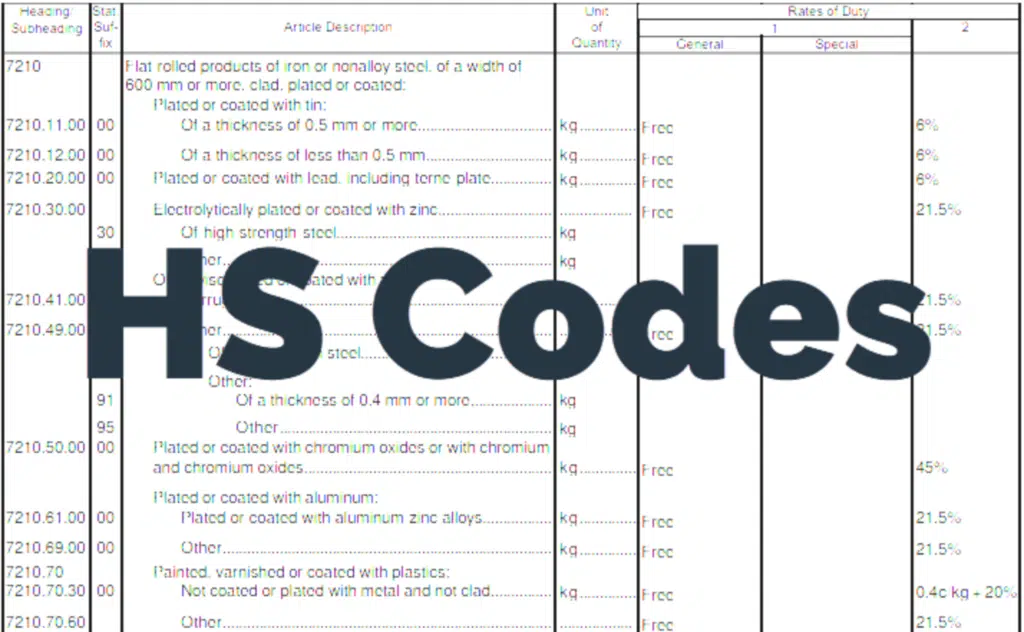Hey there! Ever wondered about the world of HS codes? For U.S. brands and businesses regularly importing hair extensions, mastering HS codes is crucial. Let’s dive into understanding these codes and see how they impact your import process.Let’s unravel this mystery together, making it simple and clear for your importing needs.
In the USA, HS codes for hair extensions vary:
6703: This category includes human hair, whether or not washed or scoured, and waste of human hair. It is commonly used for human hair extensions.
6704: This code applies to wigs, false beards, eyebrows, eyelashes, switches, and similar articles made of human or animal hair or synthetic textile materials. This could include synthetic hair extensions.
These codes, extended to 10 digits HTS Code, each of these categories can be further broken down with additional digits to specify the type of product more precise
Stick around as we delve deeper into how to find and use these codes effectively, ensuring your importing process is as smooth as silk.

HS Code of Hair Extensions in the USA
What is HS Codes
Global Standard: The Harmonized System (HS) is an international nomenclature developed by the World Customs Organization (WCO) for the classification of goods in international trade.
Structure: It is a 6-digit code system that categorizes goods based on a hierarchy of sections, chapters, headings, and subheadings. These first six digits are universally consistent across all countries.
Purpose: HS codes are used to standardize and identify products for customs purposes, trade statistics, and in setting tariffs globally.
Decoding HS Codes for Hair Extensions in the USA
In the U.S., HS codes serve as the key to navigating the complexities of international trade. Here’s how they apply to hair extensions:
Human Hair Extensions: Classified under chapter 67, specifically heading 6703. This broad classification is refined with additional digits for more detail, resulting in a 10-digit code that reflects specific types, treatments, or qualities of human hair extensions.
HS Code 6703: This category usually includes “Human hair, dressed, thinned, bleached or otherwise worked; wool or other animal hair or other textile materials, prepared for use in making wigs or the like.” This code is commonly used for processed human hair extensions.

Synthetic Hair Extensions: Also under chapter 67, these fall within heading 6704. The extended digits in their 10-digit code differentiate based on material composition, manufacturing process, and intended use.
HS Code 6704: This code typically encompasses “Wigs, false beards, eyebrows, and eyelashes, switches and the like, of human or animal hair or of textile materials; articles of human hair not elsewhere specified or included.” This category is generally used for synthetic hair products like wigs, extensions, and similar items.
Each of these categories can be further broken down with additional digits to specify the type of product more precisely.
what is HTS code
Detailed Classification: The last four digits in the 10-digit HTS code provide specific details about the product. This can include information about the hair extension’s length, style, whether it’s pre-bonded, and other characteristics.
Country-Specific: While based on the HS, the HTS code system is specific to individual countries. In the United States, for example, it’s known as the Harmonized Tariff Schedule of the United States (HTSUS).
Extended Digits: HTS codes typically extend beyond the 6-digit HS code, often up to 10 digits. The additional digits allow countries to classify goods more specifically for their own customs tariffs and detailed statistical purposes.
Purpose: HTS codes are used for determining import duties and gathering more detailed trade data. They are crucial for importers and exporters for compliance with local customs laws and in calculating tariffs.

HS Codes for Hair Extensions in the USA: A Closer Look
In the intricate world of international trade, HS codes act as your navigational compass, especially when it comes to importing products like hair extensions in the USA. Here’s a deeper dive into their roles and why getting them right matters:
1.Product Identification: These codes are essential for categorizing the type of product you’re importing. For hair extensions, the HS codes serve to differentiate between human hair (generally under 6703) and synthetic hair (typically under 6704). This classification aids customs officials in quickly understanding the nature of your product.
2.Customs Clearance: HS codes streamline the customs process. They’re the first thing officials look at when determining how to process your shipment. Correct classification ensures your hair extensions are processed smoothly and efficiently as they enter the U.S., avoiding unnecessary delays.
3.Duty Determination: Your import duties are directly tied to these codes. The specific HS code applied to your hair extensions determines the tariff rate, which can vary considerably depending on the product’s classification. Accurate use of these codes ensures you’re paying the correct amount of duty, aligning with your financial planning and budgeting.
4.Why Accurate Coding Matters: The consequences of incorrect HS coding can be significant. If your hair extensions are misclassified, you might end up paying incorrect duty rates, leading to potential overpayments or underpayments. In some cases, incorrect coding can trigger customs audits, result in fines, or even lead to the seizure of your goods. Additionally, consistent misclassification can flag your business for increased scrutiny in future imports.
5.Ensuring Accuracy: To ensure you’re using the correct HS code, it’s often advisable to consult with a customs broker or a trade compliance expert. These professionals stay up-to-date with the latest changes in tariff classifications and can provide valuable guidance. Moreover, regular checks of the U.S. Harmonized Tariff Schedule and staying informed about any changes in classification rules are crucial steps in maintaining compliance.
In essence, accurate HS coding is not just a regulatory requirement – it’s a critical component of your business strategy when importing hair extensions into the USA. It ensures legal compliance, financial accuracy, and smooth logistics, contributing to the overall success of your import operations.

Finding and Using the Correct HS Code in the U.S.
Navigating the landscape of HS codes in the U.S. for hair extensions can be complex, but with the right resources and strategies, it becomes a manageable task. Here’s how you can ensure you’re always using the correct HS code:
1.Staying Informed: The world of trade is dynamic, and HS codes are no exception. They can be updated or changed to reflect new trade policies or product classifications. Regularly updating your knowledge is vital for maintaining compliance with U.S. customs regulations and avoiding unexpected costs that can arise from using outdated codes.
2.Leveraging Online Resources: One of the best starting points is the U.S. International Trade Commission’s HTS tool. This online resource offers the most current and detailed information on HS codes. It allows you to search for specific products, like hair extensions, and provides the corresponding HS codes along with important notes on usage.
3.Consulting Customs Brokers: For those who find HS classification challenging or those dealing with a wide range of products, consulting with a customs broker can be incredibly beneficial. These professionals are well-versed in the nuances of HS codes and can provide tailored advice, ensuring that you remain compliant with U.S. import regulations.
4.Staying Updated: Keeping track of changes in HS codes is crucial. This can be done by subscribing to updates from the U.S. International Trade Commission or other relevant trade organizations. Additionally, attending seminars or webinars on trade compliance and HS coding can be a valuable way to stay informed.
5.Industry Associations and Networking: Engaging with industry associations related to hair extensions and import/export can provide insights and updates on HS code changes. Networking with peers in the industry can also be a valuable source of information and practical tips.
6.Cross-Referencing with Suppliers: When importing hair extensions, cross-reference the HS codes provided by your suppliers with those listed in the U.S. HTS. This practice helps ensure that both parties are aligned and using the correct codes.
7.Regular Review and Audits: Conducting regular reviews and internal audits of your use of HS codes can help identify any areas of risk or non-compliance. This proactive approach can save significant time and resources in the long run.
By embracing these practices, you’ll be well-equipped to find and use the correct HS code for hair extensions in the U.S., ensuring smooth and compliant import processes. Remember, staying informed and seeking professional guidance are key to successfully navigating the complexities of HS coding.

CONCLUSION
And that’s a wrap on decoding HS codes for hair extensions in the USA! With this knowledge in your arsenal, you’re all set to navigate the import landscape with confidence. Remember, keeping up-to-date and consulting experts can make all the difference in your trade journey. Here’s to your success in the vibrant world of hair extensions!
Hibiscus Hair Manufacturer has been dedicated to producing high-quality human hair extensions for 25 years and is a recognized leader in the industry. We have extensive experience in importing and exporting with clients all over the world. If you are interested in finding a reliable hair extensions supplier and wholesale for your brand, please visit our website for more information:
FACTORY





